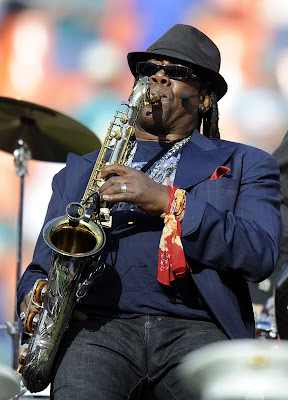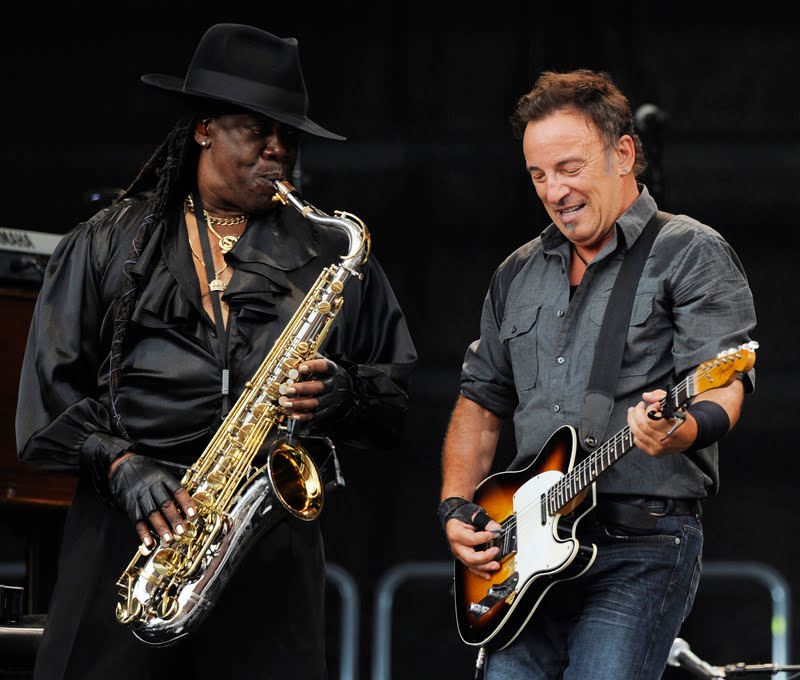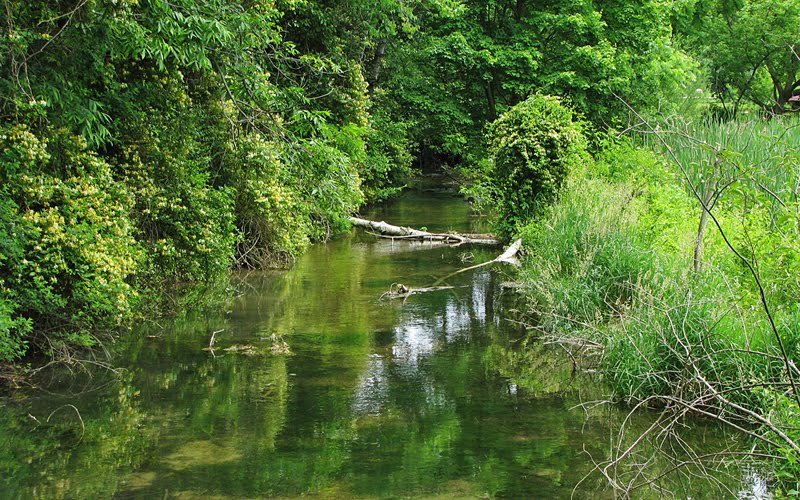Wandering down around the duck ponds (which I've learned is officially called the Dykeman Wetlands Park), I got these shots.


© 2011 by A. Roy Hilbinger
A potpourri of photography and words about Nature, social issues, and anything else that crosses my path during the day.

 Clarence Clemons, The Big Man, along with Bruce Springsteen himself the heart and soul of Springsteen's sound. He's gone, passed away Saturday, June 18, from complications from a stroke he suffered on June 12. He was 69, and that's just too damned young!
Clarence Clemons, The Big Man, along with Bruce Springsteen himself the heart and soul of Springsteen's sound. He's gone, passed away Saturday, June 18, from complications from a stroke he suffered on June 12. He was 69, and that's just too damned young!One night we were playing in Asbury Park. I'd heard The Bruce Springsteen Band was nearby at a club called The Student Prince and on a break between sets I walked over there. On-stage, Bruce used to tell different versions of this story but I'm a Baptist, remember, so this is the truth. A rainy, windy night it was, and when I opened the door the whole thing flew off its hinges and blew away down the street. The band were on-stage, but staring at me framed in the doorway. And maybe that did make Bruce a little nervous because I just said, "I want to play with your band," and he said, "Sure, you do anything you want." The first song we did was an early version of "Spirit In The Night". Bruce and I looked at each other and didn't say anything, we just knew. We knew we were the missing links in each other's lives. He was what I'd been searching for. In one way he was just a scrawny little kid. But he was a visionary. He wanted to follow his dream. So from then on I was part of history.And Springsteen said this in a public press release on Clarence's death:
Clarence lived a wonderful life. He carried within him a love of people that made them love him. He created a wondrous and extended family. He loved the saxophone, loved our fans and gave everything he had every night he stepped on stage. His loss is immeasurable and we are honored and thankful to have known him and had the opportunity to stand beside him for nearly forty years. He was my great friend, my partner and with Clarence at my side, my band and I were able to tell a story far deeper than those simply contained in our music. His life, his memory, and his love will live on in that story and in our band.The music will never be the same, so much so that many are wondering now if the E Street Band will go on, or if Springsteen will go back to playing solo. Certainly there will never again be any moments like this:

Fourscore and seven years ago our fathers brought forth on this continent a new nation, conceived in liberty and dedicated to the proposition that all men are created equal.
Now we are engaged in a great civil war, testing whether that nation or any nation so conceived and so dedicated can long endure. We are met on a great battlefield of that war. We have come to dedicate a portion of that field as a final resting-place for those who here gave their lives that that nation might live. It is altogether fitting and proper that we should do this.
But in a larger sense, we cannot dedicate, we cannot consecrate, we cannot hallow this ground. The brave men, living and dead who struggled here have consecrated it far above our poor power to add or detract. The world will little note nor long remember what we say here, but it can never forget what they did here. It is for us the living rather to be dedicated here to the unfinished work which they who fought here have thus far so nobly advanced. It is rather for us to be here dedicated to the great task remaining before us--that from these honored dead we take increased devotion to that cause for which they gave the last full measure of devotion--that we here highly resolve that these dead shall not have died in vain, that this nation under God shall have a new birth of freedom, and that government of the people, by the people, for the people shall not perish from the earth.
– Gettysburg Address, Abraham Lincoln, November 19, 1863





Honor the sacred.All value, all "morality", stems from one's attitude toward the environment in which one lives. If, as in the Abrahamic religions, you believe that humankind was created to dominate the world it lived in, and that that environment was only temporary and often deceptive, then you will treat Creation as the object of your exploitation, and even treat your fellow humans as objects to be dominated and controlled. Old Lao Tzu certainly pegged that one, as noted in the quote above: "If you treat it like an object, you'll lose it." As you can see, we're most definitely in danger of losing the world through our objectification and exploitation of it.
Honor the Earth, our Mother.
Honor the Elders.
Honor all with whom we share the Earth:-
Four-leggeds, two-leggeds, winged ones,
Swimmers, crawlers, plant and rock people.
Walk in balance and beauty.
– Unidentified Native American elder
Humankind has not woven the web of life. We are but one thread within it. Whatever we do to the web, we do to ourselves. All things are bound together. All things connect.
– Chief Seattle, 1854



 It was a little surprising to see this young Raccoon out in the daylight; they're nocturnal creatures, and seeing them out and about in the daytime is usually a sign of illness, often rabies (of which disease Raccoons are major carriers). So I kept my distance.
It was a little surprising to see this young Raccoon out in the daylight; they're nocturnal creatures, and seeing them out and about in the daytime is usually a sign of illness, often rabies (of which disease Raccoons are major carriers). So I kept my distance. Not the Duck Ponds, but Timber Hill along Possum Hollow Road, where I live. This is what I call "the home stretch" on my walk home. And as you can see, the corn is planted and growing.
Not the Duck Ponds, but Timber Hill along Possum Hollow Road, where I live. This is what I call "the home stretch" on my walk home. And as you can see, the corn is planted and growing.








